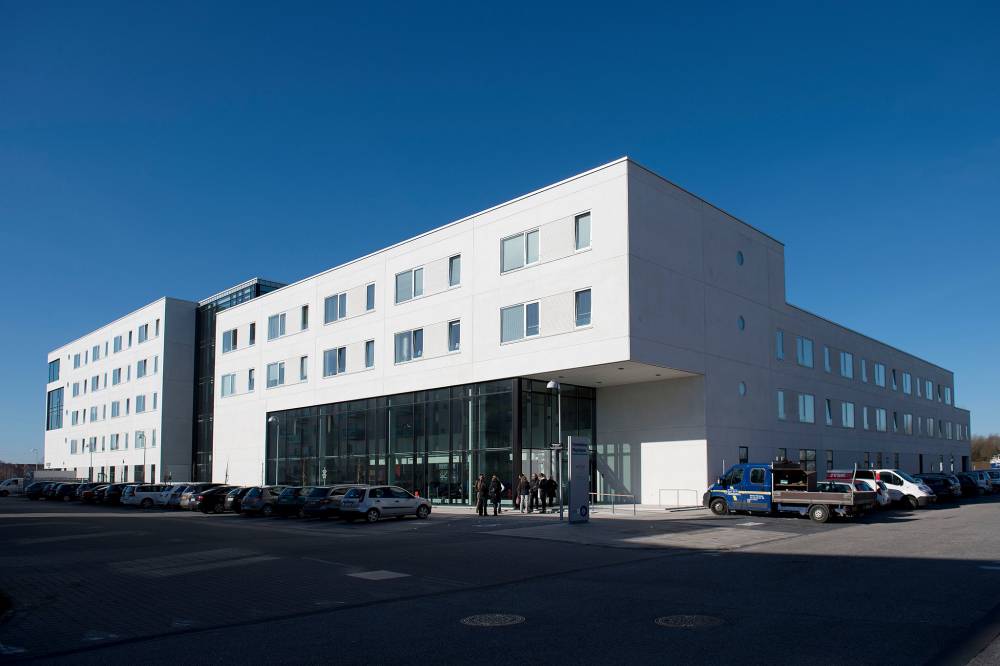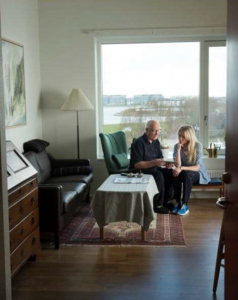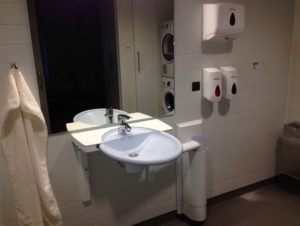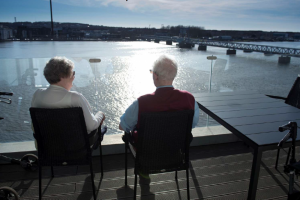
Europe has regularly inspired us with its creative and compassionate approach to aged care, and Scandinavian countries are known for their high-quality government funded public services.
At last week’s Criterion Designing and Developing Retirement Living and Residential Aged Care conference, those in attendance heard how the Danish city of Allborg is combining the two – a state-of-the-art, government funded nursing home reflecting all the latest thinking in aged care.
Lars Nohr, Chief Advisor Quality and Innovation at Aalberg’s Department of Care of the Elderly, told those at the conference that when the municipality first began to develop the home, they knew from the start they wanted to do things differently.
“We spent a lot of time thinking about this,” he said. “We included a lot of people in the planning over three years. We had a lot of ideas and dreams and fantasies.”
Citizens, seniors, family members, staff members, and management were all involved in the planning of the nursing home, which has now been open for five years.
Fremtidens Plejehjem, or in English, ‘The Nursing Home of the Future’, is a 75-room facility located on the banks of the Aalborg River in Denmark.
The highly sought after riverside location in an area that is being gentrified was chosen so residents were most likely to feel part of the community, and that they belonged.
In contrast to some of the newer developments we are seeing in Australia with small cluster homes, at Fremtidens Plejehjem there is a shift towards enabling older people to navigate larger facilities.
Traditionally Danish nursing homes are built in small clusters of apartments, but what the developers found was sometimes residents didn’t connect with their 8-10 neighbours.

Mr Nohr said, “I’m convinced that we can’t be a new family for a person. That person has to be their own person. We have to give them the opportunity to live a normal life.”
“We are not doing them a favour by excluding them from normal civil life.”
“What we thought was, we have to build units with more people.”
So the decision was made to build one home with 75 apartments, and then build a range of rooms and services that residents can access, just as they would have before going into care.
Fremtidens Plejehjem has smaller living / theme rooms, kitchens, libraries, a dentist and a doctor, a conservatorium, all of which residents can visit whenever they choose.
“We want to use the eldery’s network even more than we have, because we know now that they are very important for the elderly and the solutions,” Mr Nohr said.
Fremtidens Plejehjem can cater for residents in the four phases of their life that were identified in the planning phase.
Crisis: a lot of people come to aged care in crisis, Mr Nohr said.
“It may be their life’s biggest crisis,” he said. “When they come into a nursing home they’re saying goodbye to a lot of things, their apartment, their house, their family, their neighbourhood, furniture – everything.
“You have to attend to that crisis before anything else,” he said.
“We hope to heal them so they find a way of reviving.”
The four phases are: healing, revival, refuge, and then hospice.
“You are going to die, that’s true and you have to talk to people in the nursing home about dying,” Mr Nohr said.
“That’s very taboo in Denmark, but now there are courses for staff to help them with that.”
Fremtidens Plejehjem is 8,000 sqm in total, and consists of 75 apartments. This is about average in Denmark, where nursing home are usually around 60-100 apartments.
Every apartment has two rooms: a bedroom and a living room. Residents furnish the rooms themselves, bringing favourite pieces from home. Usually the bed is new, as residents usually require a special bed.

The rooms have:

Assistive technologies saves two staff members every night, Mr Nohr said. “That’s a lot of money”, he noted. Though the cost to instal is high, Mr Nohr said it took the nursing home only two years to recover the cost.
Asked about the lack of balconies from the apartments, Mr Nohr said their research found residents don’t use their balcony. One large balcony is for common use, he said. He also noted the Danish climate is not as suited to sitting on balconies as in Australia.
Mr Nohr said staff are “very, very important” to the success of the facility.
Fremtidens Plejehjem employs 70 healthcare providers of all kinds, including nurses, caregivers, physiotherapists, OTs, social educators, and dieticians.
“You can build a new building, but if the staff don’t know how to use the building in the daily care and nursing, just stop it,” he said.
Staff need to understand the individual. They need to know what the person did before, who were they married to, and all about them.
Some staff are given special training to offer increased services to residents. For example, because the cost of providing physiotherapists is quite high, the home has educated caregivers already working at the home to rehabilitate residents every day in their room.
“We don’t have to have the physiotherapists every day,” Mr Nohr said. “That saves us a lot of money.”
The residents have to be motivated to move around the nursing home.
There is a library where you can go to read the newspaper or a book, a conservatorium where you can enjoy the view, and smaller, more intimate kitchens, dining and living rooms where you can help to prepare food and eat.

“They are living in an open society, just like us,” Mr Nohr said.
If there are concerns about getting lost, residents wear a GPS device, he said.
“Everyone is welcome,” Mr Nohr said.
All the rooms are unsecured. People can go wherever they wish – even the public can come in.
Some at the conference asked about safety and crime. Mr Nohr said in the five years the faciity has been open, nothing has been stolen. He said if the public strays into an area that is private, they know to immediately retreat.
“It hasn’t given us any problem at all, and it gives the residents a feeling of belonging, a feeling of being connected to the local community,” he said.
Fremtidens Plejehjem has been designed to exist within a community, and to give something back to the community.
Accessible not only to residents in the building but also to the general public is a fitness centre, health centre, dentist surgery, cyber café, public restaurant, thematic rooms within the home, and the public library.
“The restaurant is quite successful,” Mr Nohr said.
Fremtidens Plejehjem has a suction and compression waste system “that’s really god for residents, that’s really good for everyone, because it stops smelling,” Mr Nohr said.
A unique feature of Fremtidens Plejehjem is a ‘living lab’, where residents, specialists and citizens can work together in creating, developing, and testing new aged-care related technologies.
The team at continues to work with universities on projects to improve the lives of older people, especially those living in residential care.
“We have 15-20 projects on (at the moment)”, Mr Nohr said.
Projects are currently underway on digital rehabilitation, video communication with health professionals, a new type of medicine dispenser, and virtual reality rehabilitation.
Lead image: Fremtidens Plejehjem Facebook.
Very interesting , what about in case of Pandemic/infection is there anything special to detect air quality?,outbreak…
So impressive and innovative planning of this sensitive Project, meeting the needs of the Older Person!
At last, finally, there is this brilliant Design. It would be a dream to be working and assisting the Residents within such a user friendly , yet providing State of the Arts amenities.
Is this facility appropriate for an individual with alcohol related dementia?
Is the cost covered by national health system?